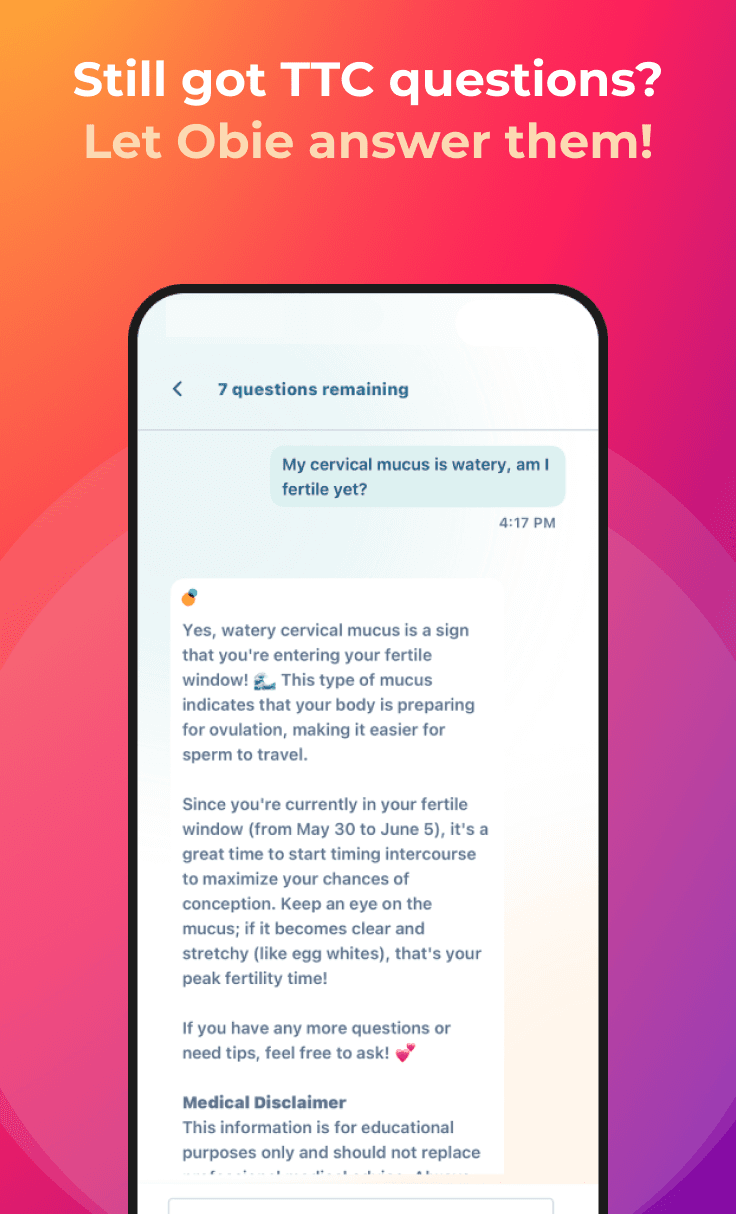Calendar Method For Fertility Awareness
Fertility Awareness
Obie Editorial Team
Calendar-based methods are one part of fertility awareness, an attempt to find which days in the menstrual cycle are fertile days and which are not.The calendar method is based on a record of the length of a woman's menstrual cycles, and trying to calculate exactly which days it is safe to have intercourse if a couple does not want to get pregnant.
Unfortunately, calculating infertile days to prevent getting pregnant is an unreliable method, as evidenced by many babies born to couples trying to prevent pregnancies by this method of calculation.
The terms rhythm method and fertility awareness are sometimes used to describe the same method of finding fertile and less fertile days. But they are different, as fertility awareness includes tracking the basal body temperature and other signs of fertility like cervical changes, while the rhythm method incliudes pure calculation of days in the calendar.
There are several formulas and calculations used for the calendar-based method which are commly referred to as the:
- Knaus-Ogino Method
- Rhythm Method
- Standard Days Method
These systems were originally designed to prevent pregnancy but they can also be used may be used to improve chances of getting pregnant. Calculations are made for timing unprotected intercourse for days identified as fertile, or to avoid pregnancy, by restricting unprotected intercourse to days identified as infertile.
The first formalized calendar-based method was developed in 1930 by John Smulders, a Roman Catholic physician from the Netherlands. It was based on knowledge of the menstrual cycle which was independently discovered by Hermann Knaus (Austria), and Kyusaku Ogino (Japan). This system was a main form of birth control available to Catholic couples for several decades, until the popularization of symptoms-based fertility awareness methods.
A new development in calendar-based methods occurred in 1999, when Georgetown University introduced the Standard Days Method. The Standard Days Method is promoted in conjunction with a product called CycleBeads, a ring of colored beads which are meant to help the user keep track of her fertile and non-fertile days.
Knaus-Ogino Method
To find the estimated length of the pre-ovulatory infertile phase, nineteen (19) days are subtracted from the length of the woman's shortest cycle. To find the estimated start of the post-ovulatory infertile phase, ten (10) days are subtracted from the length of the woman's longest cycle.
A woman whose menstrual cycles ranged in length from 30 to 36 days would be estimated to be infertile for the first 11 days of her cycle (30-19=11), to be fertile on days 12-25, and to resume infertility on day 26 (36-10=26).
Standard Days Method
The standards day method was developed by Georgetown University's Institute for Reproductive Health. It has a simpler rule set and is more effective than the Knaus-Ogino rhythm method. A product, called CycleBeads, was developed alongside the method to help the user keep track of estimated high and low fertility points during her menstrual cycle. The Standard Days Method may only be used by women whose cycles are always between 26 and 32 days in length. In this system, days 1-7 of a woman's menstrual cycle are considered infertile. Days 8-19 are considered fertile. Infertility is considered to resume beginning on day 20.








